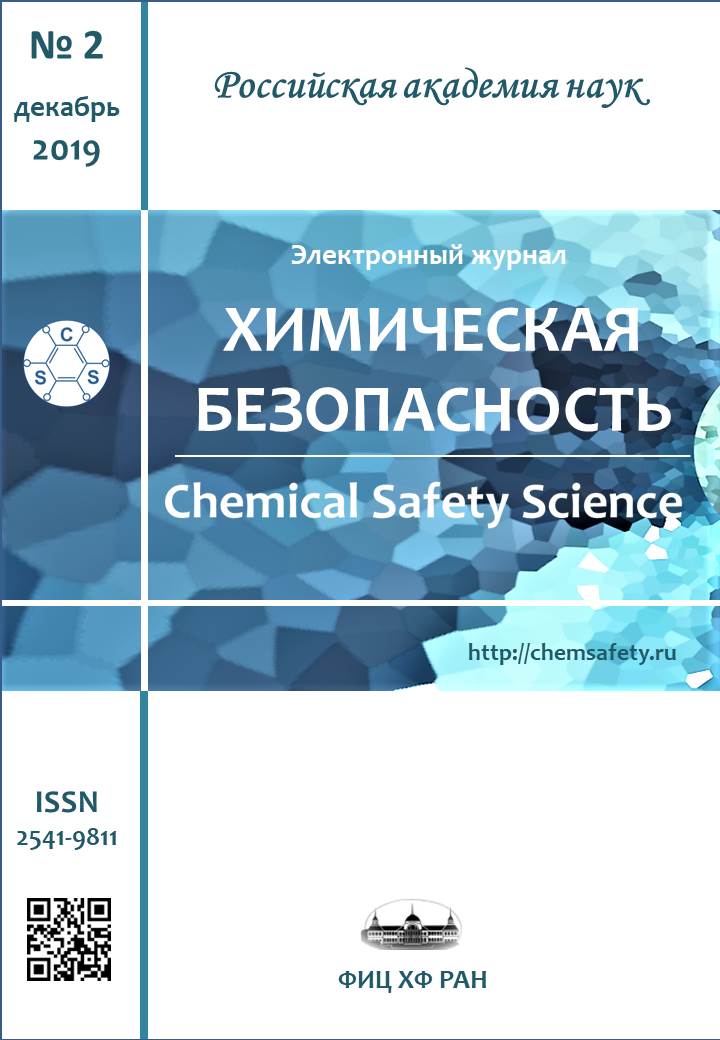Modeling of Dust Formation During Elimination of Accumulated Environmental Damage
Abstract
The ability of dust formation by a variety of materials has been investigated in conditions simulating operational procedures at the objects of accumulated environmental damage, in particular, during disposal of buildings and installations used previously for manufacturing activities as well as in the process of rehabilitation of the surrounding areas. Taking into consideration the fact that the dust formed at the rehabilitated industrial facilities may contain residual amounts of persistent pollutants, this dust can pose a real threat for human health given the fact that even at such pollutants presence at MPC level they can exhibit a so-called ‘ultra-low dose’ effect. We have studied the distribution of generated dust as a function of degree of dispersion, including the particle size smaller than 5 microns which are the most actively caught by human lungs when breathing and which are able to penetrate into the air vesicles. The most kinds of the examined construction materials and types of soil are found to have a high enough level of dust fraction with the particle size smaller than 5 microns. The materials can be placed in the following order basing on their ability to form this fraction of dust: wet sand > dry sand > clay > dry brick > concrete > asphalt.
References
Koshelev A.V., Golovkov V.F., Bogoyavleskaya Yu.S., Surovtsev V.V., Korol’kov M.V. Comprehensive rehabilitation of technogenic soil with elimination of accumulated environmental damage. In: Ecological problems of industrial cities. Ed. by E.I. Tikhomirova. Saratov: Saratov State Technical University, 2015. V. 1. P. 178 [in Russian].
Goldenkov V.A., Dikiy V.V., Lizunova G.V. // Ross. Khim. Zhurnal [Russian Chemical Journal]. 2002. V. XLVI. No. 6. P. 39 [in Russian].
Loshadkin N.A., Goldenkov V.A., Dikiy V.V. et al. // Ross. Khim. Zhurnal [Russian Chemical Journal]. 2002. V. XLVI. No. 6. P. 46 [in Russian].
Krasovitskiy J.V., Malinov A.V., Durov V.V. Dedusting of industrial gases in the production of faience. M.: Khimiya, 1994. 265 p. [in Russian].
Conley J., Yang H., Wilson T. et al. // Antimicrob. Agents Chemother. 1997. V. 41. No. 6. P. 1288.
D’akov S.I., Bubnov V.P., Lebedeva I.K. et al. // Antibiot. Khimioter. [Antibiotics and chemotherapy]. 2000. V. 45. No. 6. P. 17.
Hybertson B.M., Left J.A., Beehler C.J., Barry P.C., Repine J.E. // Free Rad. Biol. Med. 1995. V. 18. No. 3. P. 537. DOI: 10.1016/0891-5849(94)00180-r.
Moren F. Aerosol Dosage Forms and Formulations. In: Aerosols in Medicine. Principles, Diagnosis and Therapy. Ed. by F. Moren, M.T. Newhouse and M.B. Dolovitch. Amsterdam: Elsevier Science Publishers, 1985. P. 261.
Copyright (c) 2019 A. V. Koshelev, Yu. А. Yeleyev, V. F. Golovkov, and V.V. Afanas’ev

This work is licensed under a Creative Commons Attribution-NonCommercial 4.0 International License.












